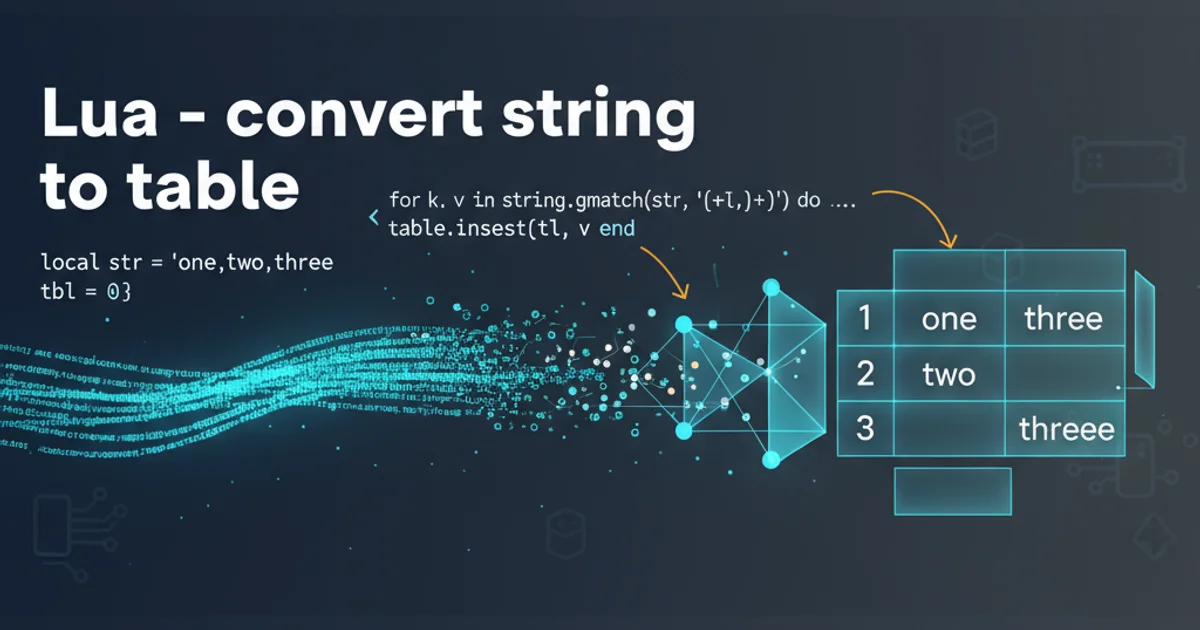How can two strings be concatenated?
Categories:
Mastering String Concatenation in R

Learn the various methods for concatenating strings in R, from basic operators to advanced functions, and understand their use cases and performance implications.
String concatenation is a fundamental operation in any programming language, and R provides several flexible ways to combine character strings. Whether you're building dynamic messages, constructing file paths, or preparing data for output, understanding these methods is crucial for effective R programming. This article will guide you through the primary techniques for string concatenation in R, highlighting their differences and best practices.
The paste() and paste0() Functions
The paste() and paste0() functions are the workhorses for string concatenation in R. They are highly versatile and can combine multiple vectors, not just individual strings. The key difference between them lies in their default separator:
paste(): Uses a space (" ") as the default separator between concatenated elements.paste0(): Uses an empty string ("") as the default separator, effectively joining elements without any space in between.
# Using paste() with default separator
string1 <- "Hello"
string2 <- "World"
result_paste <- paste(string1, string2)
print(result_paste)
# Using paste0() with no separator
result_paste0 <- paste0(string1, string2)
print(result_paste0)
# Combining multiple elements and vectors
name <- c("Alice", "Bob")
age <- c(30, 25)
message <- paste("Name:", name, "Age:", age, sep = ", ")
print(message)
Examples of paste() and paste0() for string concatenation.
paste() and paste0() are vectorized, meaning they can operate on entire vectors of strings, performing element-wise concatenation. This is a powerful feature for generating dynamic text from data.Custom Separators and Collapse Argument
Beyond the default separators, paste() and paste0() offer the sep argument to specify a custom separator for elements within a single concatenation call. Additionally, the collapse argument is crucial when you want to combine all elements of a vector into a single string, using a specified separator between the vector elements.
sep: Defines the separator between individual arguments passed topaste()orpaste0().collapse: Defines the separator between the elements of the resulting vector if the input is vectorized. Ifcollapseis used, the output is always a single string.
# Custom separator with paste()
part1 <- "File"
part2 <- "Name"
part3 <- "txt"
filename <- paste(part1, part2, part3, sep = ".")
print(filename)
# Using collapse to combine a vector into a single string
words <- c("apple", "banana", "cherry")
sentence <- paste(words, collapse = ", ")
print(sentence)
# Combining sep and collapse
items <- c("Item A", "Item B", "Item C")
quantities <- c(10, 20, 15)
report_lines <- paste("Product:", items, "Quantity:", quantities, sep = " ")
full_report <- paste(report_lines, collapse = "\n")
print(full_report)
Demonstrating sep and collapse arguments in paste().
flowchart TD
A[Start String Concatenation] --> B{Choose Function}
B -->|Join with Space| C[paste()]
B -->|Join without Space| D[paste0()]
C --> E{Need Custom Separator?}
D --> E
E -->|Yes| F[Use 'sep' argument]
E -->|No| G[Default Separator Used]
F --> H{Combine Vector into Single String?}
G --> H
H -->|Yes| I[Use 'collapse' argument]
H -->|No| J[Resulting Vector of Strings]
I --> K[Single Concatenated String]
J --> L[End]
K --> LDecision flow for choosing string concatenation methods in R.
The stringr::str_c() Function
For those who prefer a more consistent and tidy approach, the stringr package (part of the tidyverse) offers str_c(). This function provides a unified interface for concatenation, often simplifying code, especially when dealing with NA values.
Key features of str_c():
- Default separator is an empty string, similar to
paste0(). - Handles
NAvalues gracefully: by default,NAvalues in input produceNAin output. This behavior can be changed with thena_emptyargument. - Supports
sepandcollapsearguments, similar topaste().
# Install and load stringr if not already done
# install.packages("stringr")
library(stringr)
# Basic str_c()
str_c("Hello", "World")
# str_c() with custom separator
str_c("first", "second", "third", sep = "-")
# str_c() with collapse
words_strc <- c("alpha", "beta", "gamma")
str_c(words_strc, collapse = ", ")
# Handling NA values with str_c()
part_na <- c("Prefix", NA, "Suffix")
str_c(part_na, "_item") # Result contains NA
str_c(part_na, "_item", na_empty = TRUE) # NA replaced by empty string
Examples of string concatenation using stringr::str_c().
paste() and paste0() are built-in, stringr::str_c() offers a more consistent API and better NA handling, making it a preferred choice for many tidyverse users.